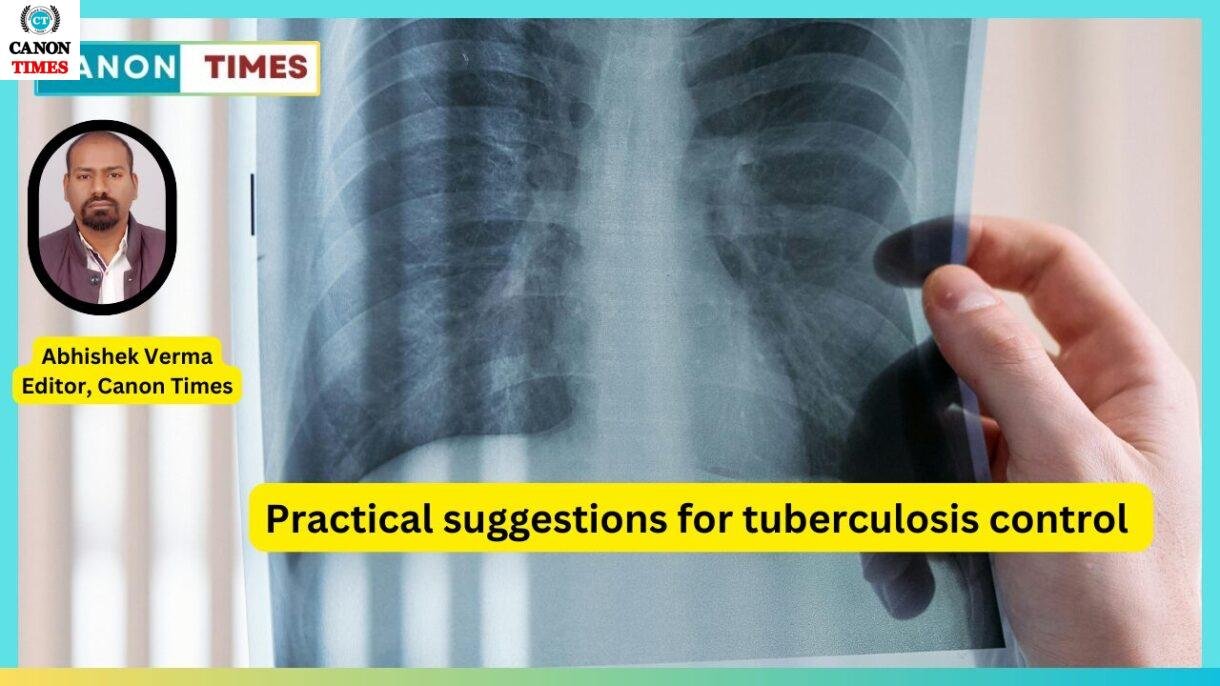World Health Organisation (WHO) estimates that every day, 3,500 people worldwide pass away from tuberculosis (TB), while around 30,000 individuals get TB bacteria. Of all instances of tuberculosis, 27% are in India alone. This is startling since tuberculosis (TB) is a disease that can be detected and treated, and because medical systems have long included TB diagnosis and treatment guidelines. The discovery of Mycobacterium tuberculosis, the bacterium that causes tuberculosis, by Dr. Robert Koch is celebrated on March 24 as World TB Day. Even with the discovery of antibiotics like isoniazid and rifampicin in the 1950s and 1960s, as well as potential therapies employing streptomycin in 1943, the fight against the infection is far from done and there are still many obstacles to be overcome in order to cure the illness.
Still a hotbed for disease

India is currently a TB hotspot. Since its start in 1962, India’s TB control campaign has seen a number of modifications that have taken into account data from a variety of public health and health system disciplines, including pharmacology, microbiology, epidemiology, the social sciences, and information technology.
The theme for World TB Day 2024, which falls on March 24, is “Yes! We can end TB!” It emphasises how TB can be completely eradicated with already available disease management methods, infrastructure, training, and political will. But TB spreads like attempting to grip sand in your palm and having it slide through it; this is true of all its forms: drug-resistant (DR-TB), fully drug-resistant (TDR-TB), extensively drug-resistant (XDR-TB), pulmonary (P-TB), and non-pulmonary TB.
Today, with advancements in technology allowing us to close previously unthinkable gaps, public health debate has taken on more significance. Although disruptive and unpredictable, the COVID-19 pandemic has highlighted socioeconomic determinants of health in the grand scheme of things and elevated preventative components of public health. Given the fast-paced urbanisation, migration, and strain on the current health systems, I provide a 10-point plan aimed at “ending TB” despite the passing of World TB Day in 2024.
First, prompt detection. Early diagnosis is crucial due to the aetiology of tuberculosis. Reporting of symptoms is frequently delayed because they are disregarded or confused with other prevalent illnesses. The availability of laboratory facilities and effective follow-up processes within health systems is crucial for the mandatory screening of each index case’s family and connections.
The second is accurate therapy classification. In order to allocate treatment regimens based on the patient’s phenotypic susceptibility, it is essential to determine the resistance status at the time of diagnosis due to the rising incidence of DR-TB.
Lastly, follow-up and treatment adherence.
TB needs long-term, consistent therapy, in contrast to other bacterial infections. This frequently results in non-compliance, which may be brought on by noticeably improving health, moving between States and districts, or changing domicile. Not all patients comply with the TB control plan, despite the fact that it contains an inbuilt mechanism for follow-up. concentrating on using technology to monitor compliance requirements.
Lastly, there is no mortality. Preventing death from tuberculosis (TB), whether it is non-pulmonary or DR-TB, is imperative.
Drug resistance: a problem
Fifth, managing resistance to drugs. Drug resistance in tuberculosis is still a man-made problem.
Drug resistance in bacillus develops as a result of selected evolutionary pressure brought on by uncontrolled antibiotic usage and treatment regimen noncompliance. The primary causes of this high level of medication resistance are inadequate regulatory frameworks for drug control and patient noncompliance with prescribed treatment plans.
Sixth, determining the prevalence of tuberculosis that is resistant to drugs.
Data on the percentage of TB patients with multidrug-resistant (MDR) and rifampicin-resistant (RR) TB, also known as resistance to isoniazid and rifampicin combined, are required. This aids in the development of the control program’s strategy and design, the distribution of resources for diagnosis and treatment, and the accessibility of the trained staff required for DR-TB. The availability of suitable medications is the seventh factor. The tuberculosis control programme requires guaranteed medical supplies. Nonetheless, in addition to identifying treatment facilities for all DR-TB cases requiring in-patient care, procurement issues for DR-TB drugs, such as bedaquiline and delamanid, must be addressed.
Combining several systems within one
Eighth, incorporation into more extensive health networks. Encouraging patients to take their medications as prescribed, avoiding noncompliance with dosages, and, most importantly, screening their contacts for any positive cases of pulmonary tuberculosis (DR or non-DR) are all dependent on the strength of referral networks both within and between various levels of public health systems and private health systems.
The ninth notification system is dynamic. Workers in the health system will have less work to do if there is a strong notification system. The National Tuberculosis Elimination Programme (NTEP)’s web-enabled patient management system for tuberculosis control, known as Ni-Kshay (Ni=End, Kshay=TB), has changed over time, but it still has to be improved in order to gather real-time TB data across sectors, practitioners, times, and places.
Tenth, examining migration and population movement. Frequently, the positive parts of life are disregarded while talking about illness and seeking medical attention, especially when it comes to tuberculosis (TB), which is stigmatised by society and culture.
It’s interesting to note that patients’ health returns fast enough for them to resume their regular activities after TB is identified and positive cases are started on treatment. Thus, at the policy level, the ability of TB therapy to be transported throughout the nation is essential.
Let’s commit to making the globe and India TB-free. We can reach the objective of “Yes!” if everyone has access to early diagnosis and ongoing care. TB has been eradicated!
Abhishek Verma
Author: This news is edited by: Abhishek Verma, (Editor, CANON TIMES)
Authentic news.






